Shortest path

Dijkstra’salgorithm
Dijkstra’s algorithm (pronounced dyke – strah) is a method of finding the shortest path between two points on a graph.
Each point on the graph is called a node or a vertex (for more information on the features and uses of graphs, see Chapter 19).
It is the basis of technology such as GPS tracking and, therefore, is an important part of AI.
This set of instructions briefly describes how it works.
- Give the start vertex a final value of 0.
- Give each vertex connected to the vertex we have just given a final value to(in the first instance, this is the start vertex) a working (temporary) value.If a vertex already has a working value, only replace it with another working value if it is a lower value.
- Check the working value of any vertex that has not yet been assigned a final value. Assign the smallest value to this vertex; this is now its final value.
- Repeat steps 2 and 3 until the end vertex is reached, and all vertices have been assigned a final value.
- Trace the route back from the end vertex to the start vertex to find the shortest path between these two vertices.
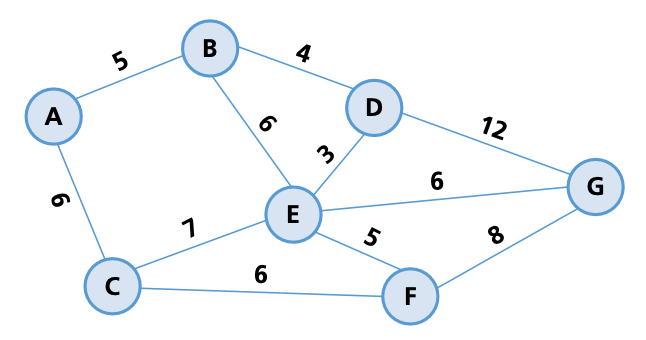
- First, redraw the diagram, replacing the circled letters as per the key:
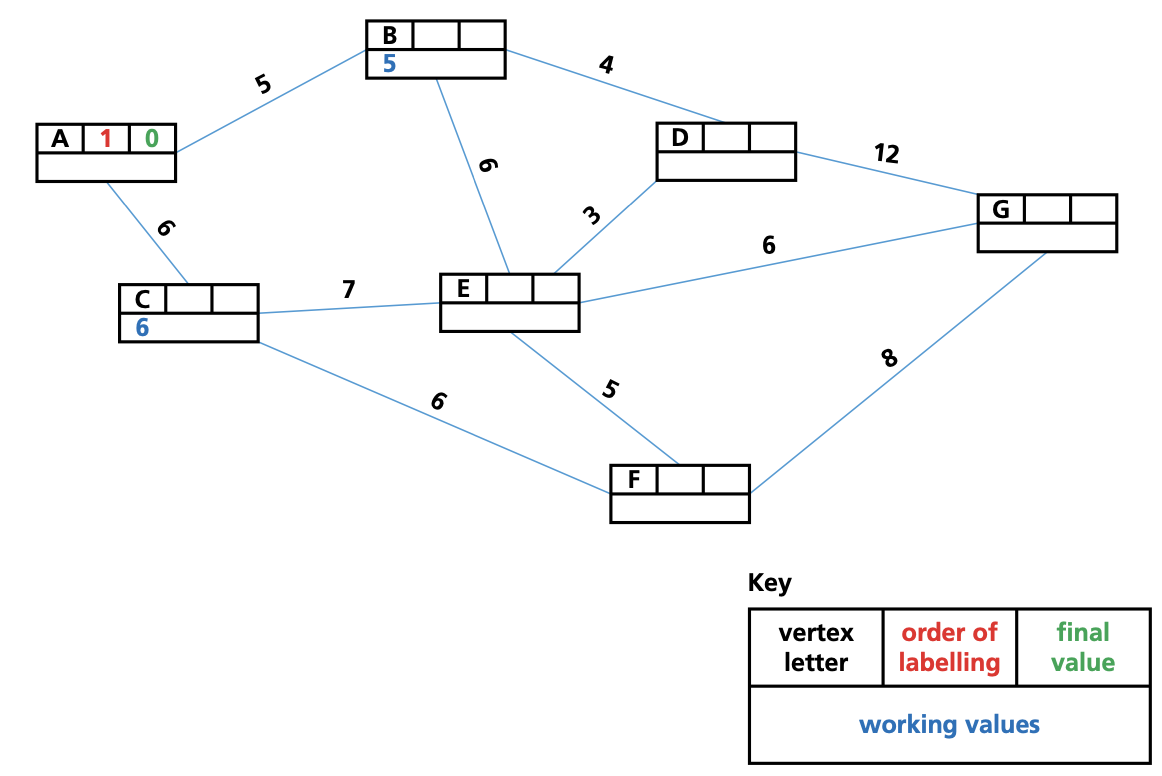
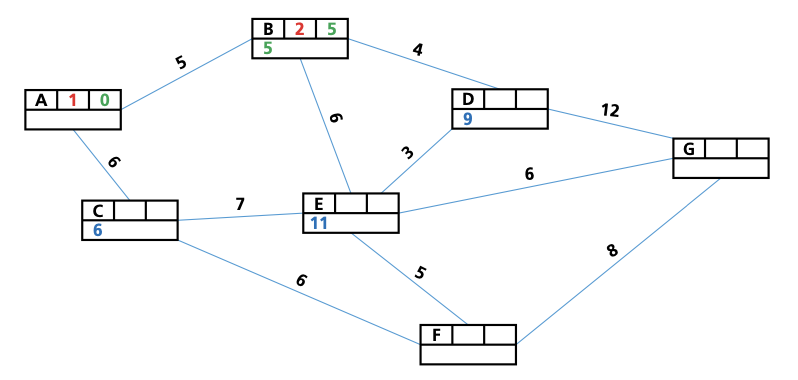
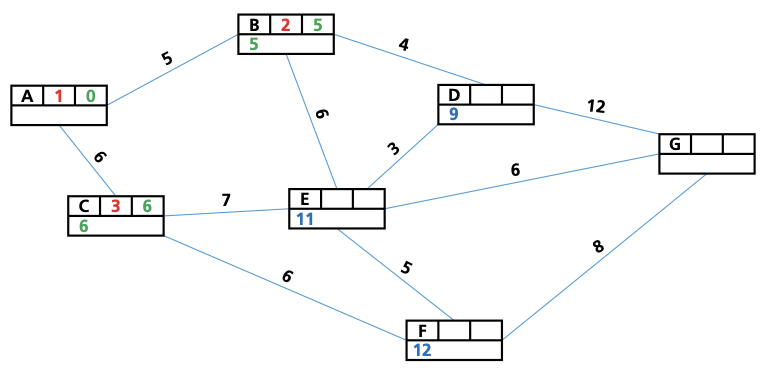
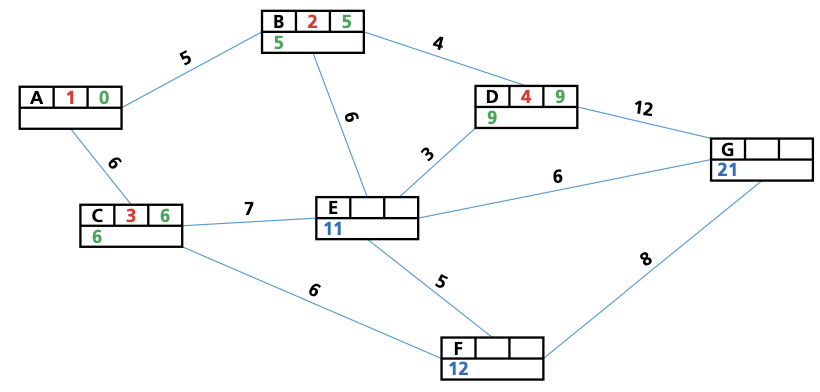
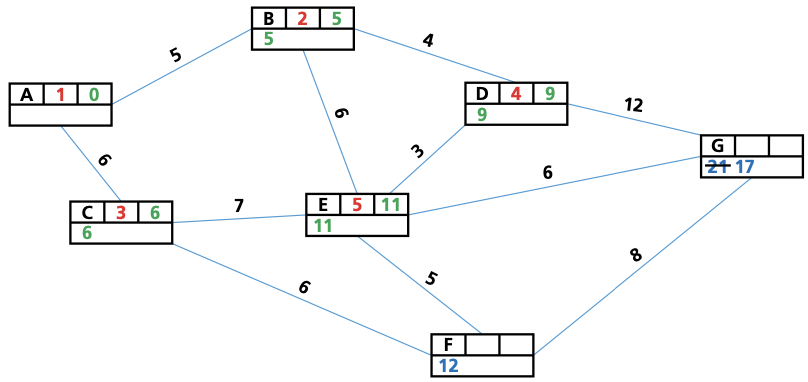
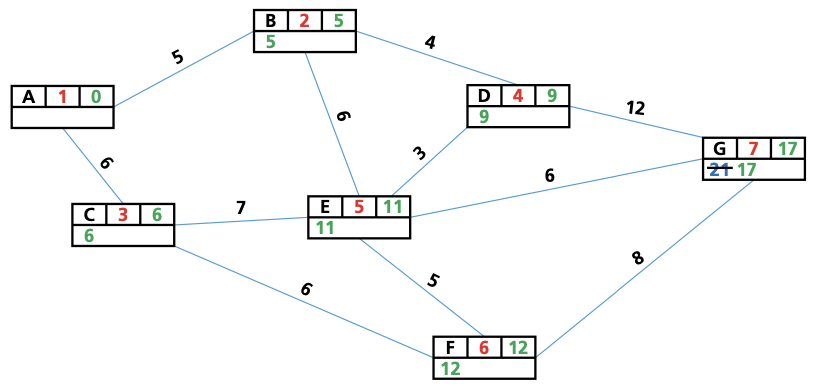
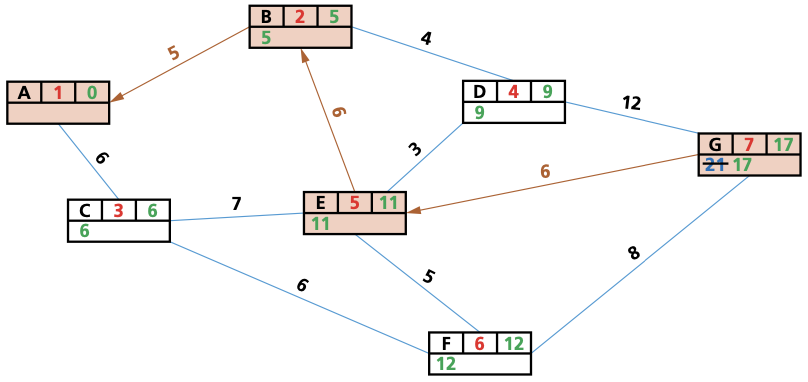
A* algorithm
- Dijkstra’s algorithm simply checks each vertex looking for the shortest path, even if that takes you away from your destination – it pays no attention to direction.
- With larger, more complex problems, that can be a time-consuming drawback.
- A* algorithm is based on Dijkstra, but adds an extra heuristic (h) value – an ‘intelligent guess’ on how far we have to go to reach the destination most efficiently.
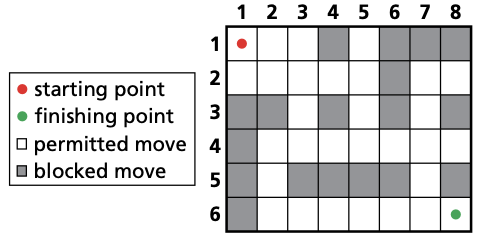
- Each of the parts of the graph are called nodes (or vertices). Each node has four values
- h (the heuristic value)
- g (movement cost)
- f (sum of g and h values)
- n (previous node in the path)
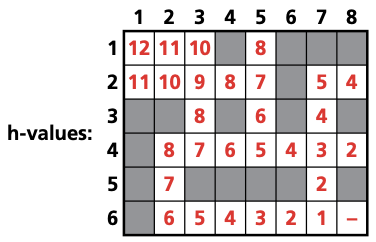
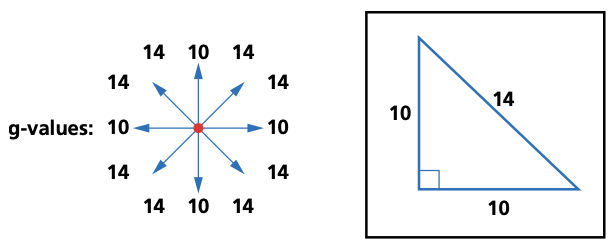
- Find the f values using f(n) = g(n) + h(n).
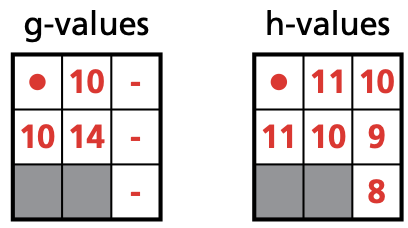
- square (1,2): f = 10 + 11 = 21
- square (2,1): f = 10 + 11 = 21
- square (2,2): f = 14 + 10 = 24
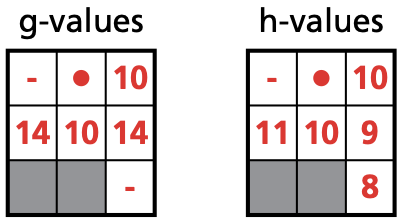
- square (3,1): f = 10 + 10 = 20
- square (3,2): f = 14 + 9 = 23
- square (1,2): f = 14 + 11 = 25
- square (2,2): f = 10 + 10 = 20
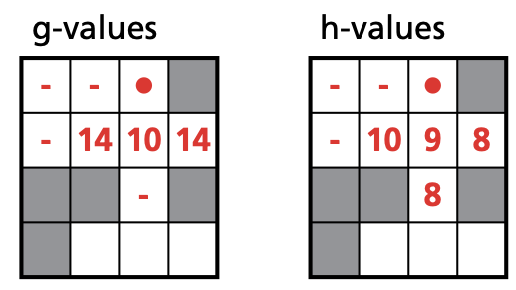
- square (2,2): f = 14 + 10 = 24
- square (3,2): f = 10 + 9 = 19
- square (4,2): f = 14 + 8 = 22


- The shortest path is:
- (1,1) → (2,2) → (3,3) → (4,4) → (5,4) → (6,4) → (7,5) → (8,6)